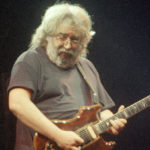This Biography is about one of the best Chemist Jerome Karle including his Height, weight,Age & Other Detail…
| Biography Of Jerome Karle | |
| Real Name | Jerome Karle |
| Profession | Chemists |
| Nick Name | Jerome Karfunkle |
| Famous as | Physical Chemist |
| Nationality | American |
| Personal life of Jerome Karle | |
| Born on | 18 June 1918 |
| Birthday | 18th June |
| Died At Age | 94 |
| Sun Sign | Gemini |
| Born in | New York City, USA |
| Died on | 06 June 2013 |
| Place of death | Annandale, Virginia |
| Family Background of Jerome Karle | |
| Father | Louis Karfunkle |
| Mother | Sadie Helen (Kun) |
| Spouse/Partner | Isabella Helen (Lugoski) Karle (m. 1942; 3 children) |
| Children | Louise Karle, Jean Karle, Madeleine Karle |
| Education | City College of New York, Harvard University, University of Michigan |
| Personal Fact of Jerome Karle | |
|
Jerome Karle was an American physical chemist and crystallographer who, along with Herbert A. Hauptman, won the Nobel Prize for Chemistry in 1985 for their outstanding achievements in the development of direct methods for the determination of crystal structures. After receiving his PhD in physical chemistry, he worked on the Manhattan Project for three years. Thereafter, he joined the US Naval Research Laboratory (NRL) and eventually became its chief scientist for research on the structure of matter. Meanwhile, after World War II, he collaborated with Hauptman at the NRL on the study of crystal structures. They derived mathematical equations to describe the arrangements of numerous spots that appear on photographic films, as a result of a crystal’s diffraction of X-rays. Their equations made it possible to identify the exact location of atoms within the crystal’s molecules, based on an analysis of the intensity of the spots. Although their method was published in 1949, it remained useless for quite some time, awaiting its potential applications. Gradually, crystallographers began utilizing the method to determine the three-dimensional structure of small biological molecules. Using the powerful computers of the 1980s, this innovative method reduced the time taken to determine the structure of a simple biological molecule from two years to only two days. He worked at the NRL for more than 60 years and retired in 2009. |
|




